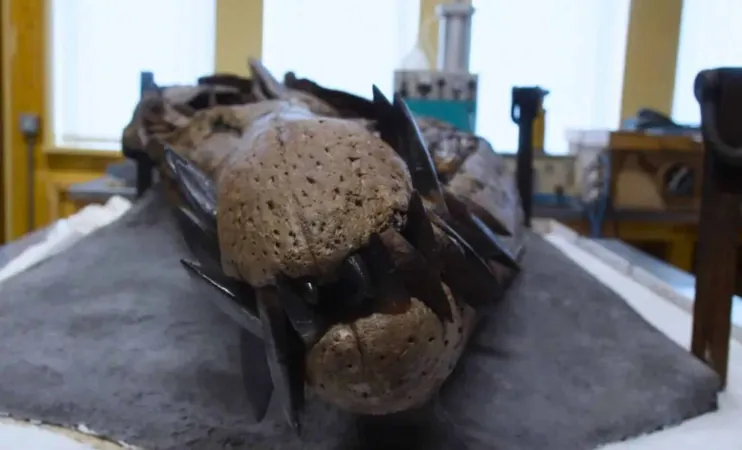
Revolutionary Lab-Grown Chicken Nuggets Set to Transform the Future of Meat
2025-04-17
Author: Noah
A Breakthrough in Cultured Meat Technology
In an exciting development for the food industry, researchers have successfully created nugget-sized chunks of chicken using a revolutionary lab-grown meat technology that replicates the human circulatory system.
The Science Behind the Nuggets
This innovative approach employs fine, hollow fibers to deliver oxygen and nutrients to chicken muscle cells suspended in a gel. This advancement has enabled scientists to cultivate meat pieces measuring up to 2cm long and 1cm thick.
Experts believe that this hollow fiber bioreactor not only has the potential to produce whole cuts of chicken, beef, pork, and fish, but it could also be instrumental in growing functional human organs.
A Game-Changer in the Meat Industry
Prof. Derek Stewart from the James Hutton Institute hailed this development as a "transformative step." He described the creation of lab-grown chicken in nugget form as a significant leap, noting that it fulfills a size and shape that people are instinctively drawn to.
Overcoming Major Challenges
One of the primary obstacles in lab meat production has been ensuring that muscle cells receive adequate nutrients and oxygen in thicker tissue sections. Without these essentials, the cells die, prompting many researchers to focus on smaller, minced meat alternatives.
To tackle this issue, Prof. Shoji Takeuchi of the University of Tokyo designed a bioreactor that encapsulates living cells in a nutrient-rich gel and feeds them through semi-permeable fibers. This groundbreaking system supports the growth of larger, more consistent meat tissue.
Towards Larger Cuts of Lab-Grown Meat
In their findings published in Trends in Biotechnology, Takeuchi and his team revealed they were able to cultivate an 11g chunk of chicken, integrating over 1,000 hollow fibers within the gel. This innovation enables researchers to replicate the texture and appearance of conventional meat, bridging the gap between lab-grown and naturally sourced food.
The Future of Edible Fibers in Cultured Meat
Currently, the hollow fibers must be manually extracted after the meat is cultivated. However, researchers have ambitious plans to replace them with edible cellulose fibers. This could not only enhance the texture of the meat but also potentially fortify it with essential nutrients.
Prof. Stewart suggested that by adding elements like zinc and selenium to the culture medium, they might strengthen the immune systems of older adults. He humorously proposed the idea of infusing masala sauce into the fibers to create tantalizing chicken tikka masala nuggets.
Looking Ahead: The Path to Market
While the current model may be more expensive than traditional chicken due to production costs, Takeuchi is optimistic. He believes that with sufficient investment, lab-grown products could hit the market within five to ten years.
"Initially, these products will be pricier, but with advancements in scalable, food-grade systems, we anticipate significant cost reductions in the future," he stated.
A Culinary Revolution Awaits!
The future of eating may very well be shaped by lab-grown meat technology, bringing sustainable options that satisfy our cravings while being gentler on the planet. This groundbreaking research paves the way for a new era of food, where deliciousness and nutrition go hand in hand.









 Brasil (PT)
Brasil (PT)
 Canada (EN)
Canada (EN)
 Chile (ES)
Chile (ES)
 Česko (CS)
Česko (CS)
 대한민국 (KO)
대한민국 (KO)
 España (ES)
España (ES)
 France (FR)
France (FR)
 Hong Kong (EN)
Hong Kong (EN)
 Italia (IT)
Italia (IT)
 日本 (JA)
日本 (JA)
 Magyarország (HU)
Magyarország (HU)
 Norge (NO)
Norge (NO)
 Polska (PL)
Polska (PL)
 Schweiz (DE)
Schweiz (DE)
 Singapore (EN)
Singapore (EN)
 Sverige (SV)
Sverige (SV)
 Suomi (FI)
Suomi (FI)
 Türkiye (TR)
Türkiye (TR)
 الإمارات العربية المتحدة (AR)
الإمارات العربية المتحدة (AR)